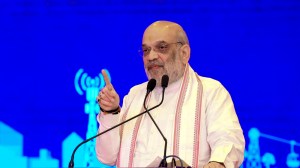Crores sanctioned under Central Road Fund, but 20 states, UTs didn’t spend a paisa
As many as 20 of India’s 35 states and Union Territories have not spent any of their allotted CRF resources despite the country’s desperate need for infrastructure development and the central government’s repeated pleas to boost public spending.

As many as 20 of India’s 35 states and Union Territories have not spent any of their allotted Central Road Fund (CRF) resources despite the country’s desperate need for infrastructure development and the central government’s repeated pleas to boost public spending.
Usual suspects Bihar and Uttar Pradesh are in the list of those who failed to spend a single rupee on developing and maintaining state highways and rural roads under CRF, but so are top industrial performers like Delhi, Chandigarh and Maharashtra, and upcoming Himachal Pradesh. The data, compiled by the Union Ministry of Road Transport, is accurate up to October 31, 2008.
The CRF is compiled from levies on motor spirits including petrol and high-speed diesel. The total budgetary allocation out of this Fund for state governments in 2008-09 was Rs 1671.64 crore.
Uttar Pradesh, for whose roads the World Bank has pumped in millions of dollars, has spent nothing from the Rs 72 crore tranche it has already received under CRF so far. The Rs 20 crore that Bihar has received—out of its total allocation of Rs 40 crore for the whole year—remains untouched. Same is the case with Maharashtra and Himachal Pradesh who have received Rs 87 crore and Rs 9.67 crore from their shares of Rs 175.9 crore and Rs 19.67 crore respectively.
In the zero-spend list are six of India’s seven Union Territories. This includes Delhi, which has got half of its CRF-sanctioned Rs 48 crore. Puducherry is the exception, having spent the Rs 3.81 crore allocated to it from its Rs-7.59 crore CRF entitlement.
“Most states lack infrastructure-development capacity. The ability to award and execute public-private-partnerships is not there.
Consequently, projects do not take off and funds remain unutilised,” said Jayesh Desai, National Director, Infrastructure, Real Estate and Government Services, Ernst and Young.
“Union Territories like Delhi and Chandigarh have not utilised the grant because they have a surplus budget and can manage projects from their own resources,” Desai added. And in some places like Maharashtra, the focus is on big-ticket projects like the Mumbai trans-harbour link, even though most of its cities continue to suffer from poor road infrastructure.
Several states, however, questioned the basis of the central ministry data.
A senior officer of the Municipal Corporation of Delhi in charge of roads told The Indian Express: “Delhi has utilised a part of the funds allocated to us. It may not be reflected in the central data as the utilisation certificate is submitted to the Delhi Government.”
A Bihar official said: “We have sent utilisation certificates worth Rs 142 crore to Delhi, against which we have received Rs 121 crore. The centre is yet to give us the other Rs 21 crore. But this does not seem to have been reflected in their data.”
A top Nagaland official blamed the weather for the situation. “It rains for almost 6 months in the year here starting May. It is only by December that work is likely to pick up,” the official said. Nagaland is also on the zero-spend list.
The Ministry of Road Transport and Highways claims it compiles its data every month after confirming with the states.
Photos





- 01
- 02
- 03
- 04
- 05


























